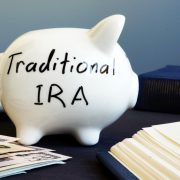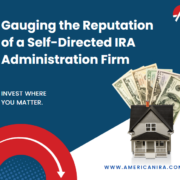The Case for “Real Assets” Inside a Self-Directed IRA
 It’s been a spectacular run for stocks. As of this writing, the trailing 12-month return for stock, as measured by the S&P 500 Index of U.S. large-cap stocks, is 24 percent. Over the last three years the stock market has averaged 16.44 percent. And over five years, the average return has been 18.69 percent for traditional investors and even better for Self-Directed IRA investors who realized those returns tax-free and/or tax-deferred.
It’s been a spectacular run for stocks. As of this writing, the trailing 12-month return for stock, as measured by the S&P 500 Index of U.S. large-cap stocks, is 24 percent. Over the last three years the stock market has averaged 16.44 percent. And over five years, the average return has been 18.69 percent for traditional investors and even better for Self-Directed IRA investors who realized those returns tax-free and/or tax-deferred.
You don’t get too many runs like that. And they don’t last forever.
Meanwhile, what investment theorists call “real assets” have been lagging. Asset classes like real estate, natural resource stocks and funds and commodity futures have logged their worst returns – compared to the S&P 500 – since 1970, according to John Ruff, an investment advisor and author of PracCap.com.
Don’t blame real estate, though: It’s been engaged in a broad and substantial price recovery right along with stocks, since both stocks and real estate crashed at close to the same time, in 2008-2009 – to the chagrin of those who where too heavy in stocks and over leveraged in their homes, thinking stocks and real estate by themselves provided adequate diversification.
That didn’t work out well.
Meanwhile, Americans are starting to face the prospect of inflation in certain sectors – the inevitable result of years of rock-bottom interest rates just a few points above zero, quantitative easing and massive deficit spending. The consumer price index remained over 2 percent for June 2014, though it was energy (+3.2 percent) and food prices that were responsible for the bulk of it (Hamburger has just reached a record high, for example.) Excluding food and energy, inflation was clocked at 1.9 percent for June, or 2.1 percent with all items included.
If this is true, then producers are starting to find some pricing power – and price gains could continue. This bodes well for a variety of real asset classes, which are natural hedges against inflation.
As we transition through this inflection point in monetary policy, with the Fed gradually taking its foot off the money creation gas pedal, Jon Ruff believes that these unsung asset classes will once again soon take their places in the limelight.
This isn’t just good news for Ruff’s investors (Ruff heads the Real Asset Strategies desk at AllianceBernstein); it’s good news for open-minded, flexible and diversified investors – the kind who elect to use self-direction to diversify their own retirement portfolios.
As we never fail to point out, there is no law that limits your Self-Directed IRA, Solo 401k, SIMPLE, SEP or even Coverdell accounts to the usual mundane asset classes of stocks, bonds and CDs. Indeed, with stocks at such heady heights, interest rates still near historic lows, a Fed that is pulling back on the throttle, and murmurings of inflation, these traditional asset classes may not be where you want to be concentrated.
Using Self-Directed IRAs, you can take the same tax advantages these retirement savings vehicles offer to the standard asset classes, and bring them to bear on these potential investments:
- Real estate
- Raw land
- Commodities
- Foreign stocks
- Limited partnerships
- Oil and gas development
- Pipelines
- Farming and ranching
- LLCs, partnerships or closely-held C corporations
- Private lending
- Gold and precious metals
- Mining interests
- Wineries and breweries (but not direct ownership of alcoholic beverages such as wine collections)
- Tax liens and certificates
- … and many more.
All these different asset classes allow the individual to maximize his or her individual expertise and find new ways to diversify away from vulnerable assets that have already had a good run.


